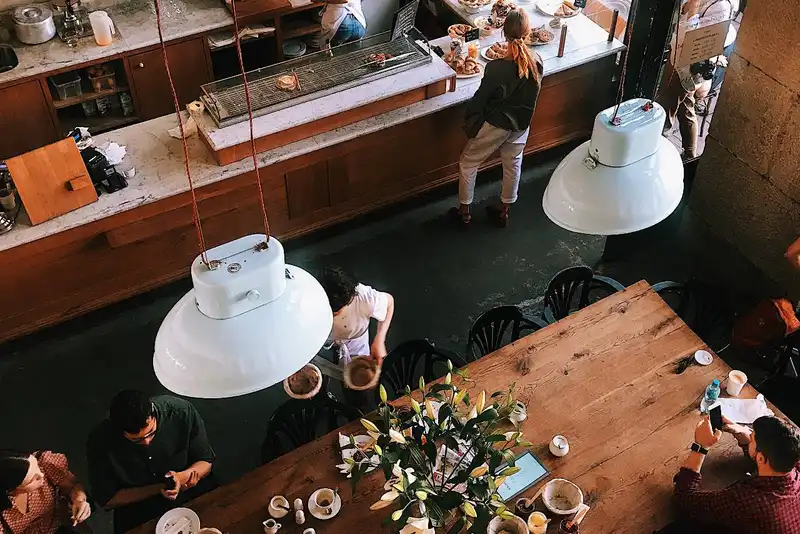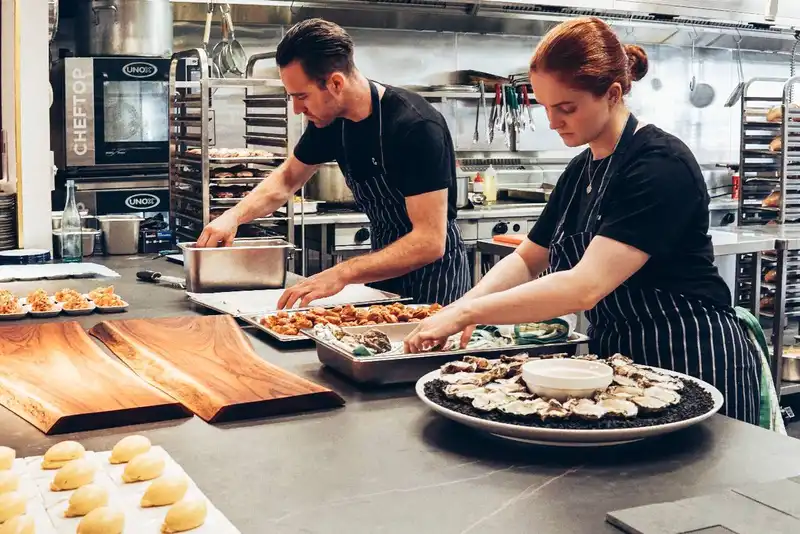Restaurant Organization - 7 Best Practices for Management
A restaurant's back-of-house area is where key functions are performed, specifically food storage. Developing a well-defined restaurant organization strategy will ensure that perishable goods, like meat and produce, are properly stocked and food quality standards are maintained.
An organization plan will also enable restaurant employees to efficiently navigate and utilize their storeroom and kitchen space.
7 Tips for Restaurant Organization

Restaurants that want to improve their organizational methods should implement these best practices.
1. Utilize the First In, First Out Rule
Also known as FIFO, the first in and first out rule ensures that perishable ingredients are used before they expire.
According to FIFO, when new deliveries of supplies are received, they must be placed behind the existing stock. This makes the older ingredients easier to retrieve and guarantees that they are all used before the new stock.
This rule enables restaurants to reduce their food waste and helps staff effectively organize stock based on dates of expiration.
2. Establish a Standardized Labeling System
All ingredients and supplies should be correctly labeled so that employees can quickly find exactly what they need in the storeroom.
Shelves and storage spaces should also be labeled to ensure that goods are placed in the appropriate areas. This will not only help with locating products, but it can allow kitchen managers to easily identify whether or not ingredients are running low.
3. Install Shelves in the Storeroom

Storerooms and kitchen spaces can be maximized with the installation of shelves. Restaurant owners should look into durable and heavy-duty shelves that can be easily cleaned and can hold large-volumes of food supplies.
4. Organize Goods Based on Category
To make sure that restaurant staff can locate the ingredients and supplies they need, management should organize these products based on categories. Goods can be separated by ingredient type, tool usage, or recipe.
For example, a shelf can be dedicated for dry products, like flour and sugar, while another shelf can be used for liquids, like syrups and alcohol.
This can eliminate instances of cross-contamination, which is the transfer of contaminants or bacteria from one product to another.
5. Map the Floor Plan of the Storeroom

Restaurant owners should plan and organize their overall back of house layout to optimize the flow and accessibility of the space.
An eatery, for instance, can place its shelves in a way where staff members can easily access the front and back of it. This will simplify the FIFO process since employees can effortlessly stock new products to the back of the shelf.
Additionally, certain ingredients and kitchen equipment that are most frequently used should be placed near the front of the storeroom. Prioritizing these supplies and putting them closer to kitchen staff will save time and ensure the necessary products can be accessed quickly.
Once a floor plan is established, management teams should create a detailed map and display it clearly for kitchen staff. Employees will then be able to guide themselves throughout the space and can consult the map whenever they need it.
6. Comprehensively Train All Employees
Almost all kitchen staff will have to navigate through the storeroom to find ingredients and items to prepare customer orders. Therefore, they should all be trained on inventory management practices and storage room regulations.
For example, staff should be taught how to receive new deliveries of goods. Doing so will ensure that products are correctly counted and processed, and properly organized from the beginning.
7. Control the Storeroom's Internal Environment

The internal conditions in a kitchen's storeroom can greatly impact the quality of goods. When organizing the restaurant space, management should focus on its temperature, lighting, and moisture levels.
- Temperature
On the other hand, freezer temperatures should always be at 0F, while refrigerators should be set at 40F or below.
It is recommended that restaurant managers keep a thermometer in the storeroom to monitor the space's temperature.
- Lighting
The storeroom should be dark and free of windows to prevent food products from being exposed to light. Bright lighting can impact internal temperatures and can also oxidize foods, which is a chemical reaction in ingredients when it is exposed to oxygen.
Oxidation can degrade an ingredient's nutritional value and will cause its natural color to fade or appear grey. This is apparent when the inside of an apple or banana turns dark brown due to being left outside.
Preferably, the storeroom should have artificial lights that turned on only when kitchen staff enters the space.
- Moisture
When there is moisture in the storeroom, mold and bacteria can easily grow and spread. This is harmful to food products and kitchen supplies, in which ingredients will become unusable and shelves can rust. Therefore, practices must be put in place to keep moisture levels at a minimum.
Restaurants can invest in a dehumidifying system to remove any moisture from the air and to control the storeroom's humidity.
By following these tips for restaurant organization, businesses can guarantee a streamlined workflow and that ingredients and supplies are kept at their highest quality.






